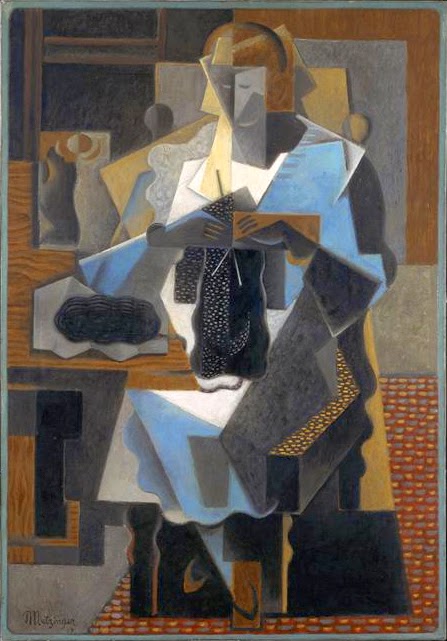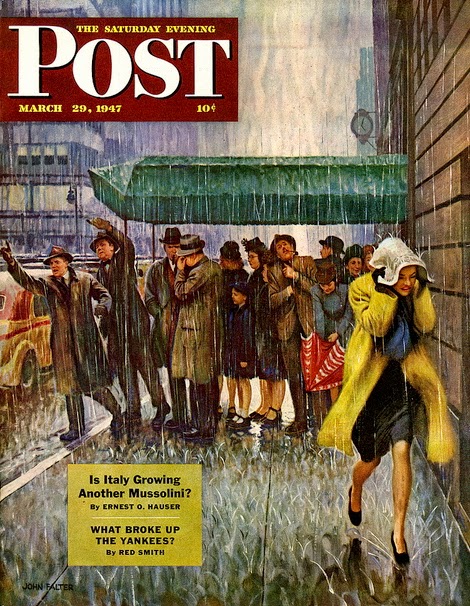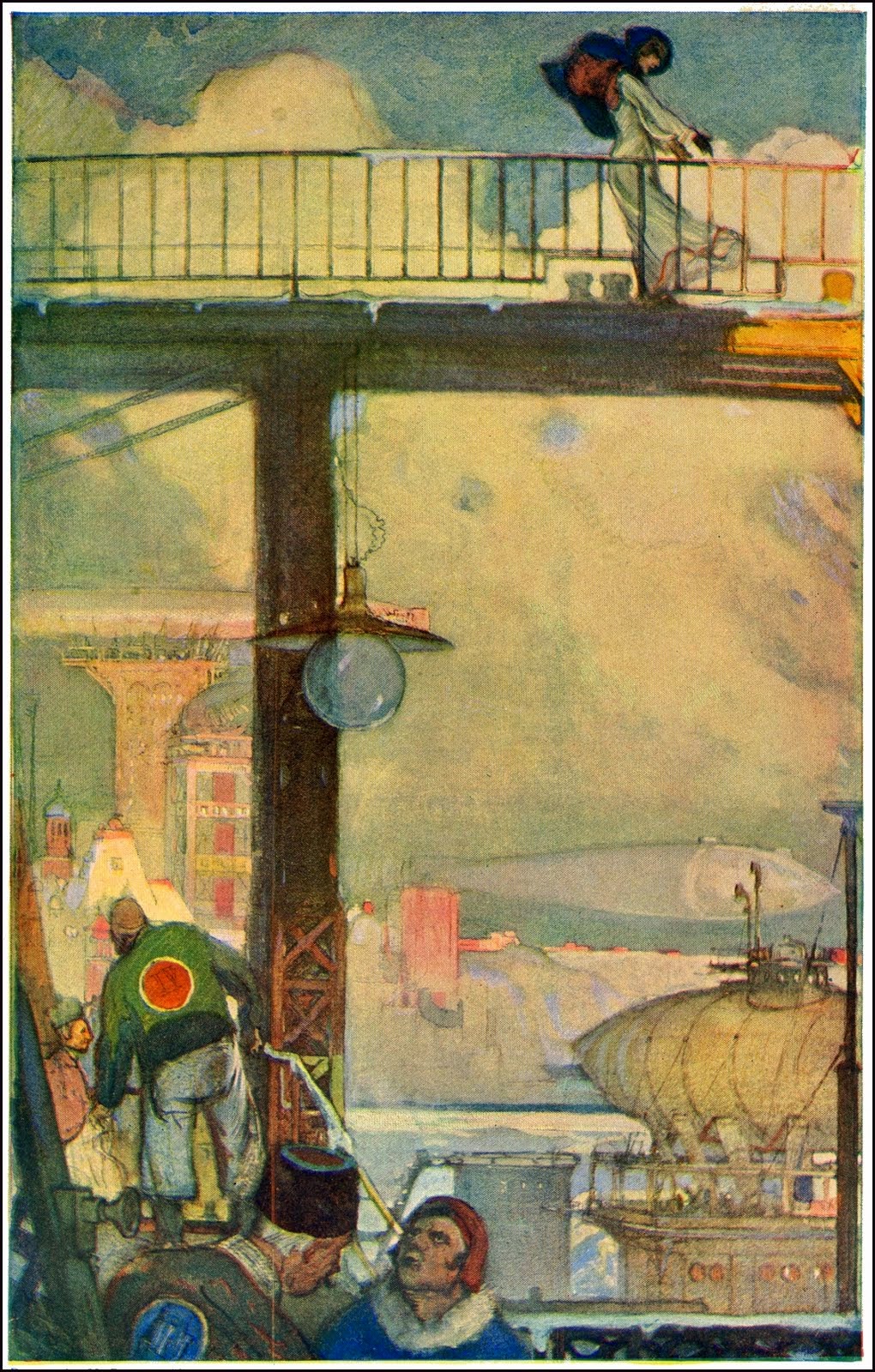There are lengthy biographical articles on Metzinger on the Internet. His Wikipedia entry is here. Another long essay that is richly illustrated can be found in two places: here and here.
I must confess that I was unaware of Metzinger until very recently when I began searching for cubist portraits. Although he is hardly unknown to art history, it seems that he has been somewhat bypassed in the Modernist Establishment timeline that culminated in Abstract Expressionism of the 1950s. Perhaps this was because he reverted to a restrained version of modernism by the 1920s, failing to take up Surrealism or full-blown abstraction.
Metzinger seemed to enjoy portraying women. With that in mind, I summarize his career in the series of paintings featuring women in the Gallery section below.
Femme assise au bouquet de feuillage - 1905
Femme au chapeau c. 1906
Metzinger was in his early 20s and trying out modernist styles. In these two paintings he is experimenting with Divisionism, a Postimpressionist approach.
Le goûter - 1911
Some sources credit this as Metzinger's breakthrough Cubist painting. Braque and Picasso had been painting in the Cubist style for two or three years at this point.
La femme au cheval - 1911-12
The title says this is a woman with a horse -- but I'm sure you could tell that already by simply looking at the image.
Danseuse au café - 1912
Note Metzinger's use of light in this painting and the two previous ones. These are in the spirit of Analytic Cubism, but the bland colors favored by Picasso and Braque in this cubist phase are ignored. Instead, we see the effect of light sources on the cubistically reassembled objects. One result is a feeling of depth, rather than the flattened picture plane favored by other cubist painters. I find this very interesting.
Les Baigneuses - 1912-13
A cubist landscape with bathing women that also features light shining on subjects.
Femme à la dentelle - 1916
La tricoteuse - 1919
These two paintings reflect the late-style Synthetic rather than earlier Analytic Cubism. Metzinger soon abandoned Cubism for many years.
Jeune femme pensive aux roses rouges - 1923
After the Great War many modernists recoiled from the "isms" that had been created in the years leading up to the conflict. Some, like Picasso, returned to more hard-core modernism. Others retained some representation of subjects, but included modernist affectations such a a flattened picture plane, simplification of shapes and so forth. Here Metzinger relies mostly on simplification.
Salomé - 1924
And here he uses both simplification and distortion as modernistic effects.
Femme debout - 1935
In the mid-1930s Metzinger continued to paint women in the then-fashionable simplified, solid-appearing manner.
Nu au hortensias - 1935
A touch of Cubism possibly returns here in the form of the unusual light-shade pattern.
La baigneuse (nu) - 1936-37
Here Metzinger flattens the picture plane somewhat.
Yachting - 1937
Hints of Cubism in the background, but the interesting treatment of the woman is non-cubist.
Portrait de femme en vert - c. 1940
A highly designed composition with a flattened picture plane, simplifications, some color distortion. Yet the drawing of the woman's head is so strong that those details are ignorable.
Nu couché - 1946
This postwar painting continues Metzinger's Cubism-lite that was seen in Femme en vert above.












%2B-%2B1936-37.jpg)


























.jpg)














